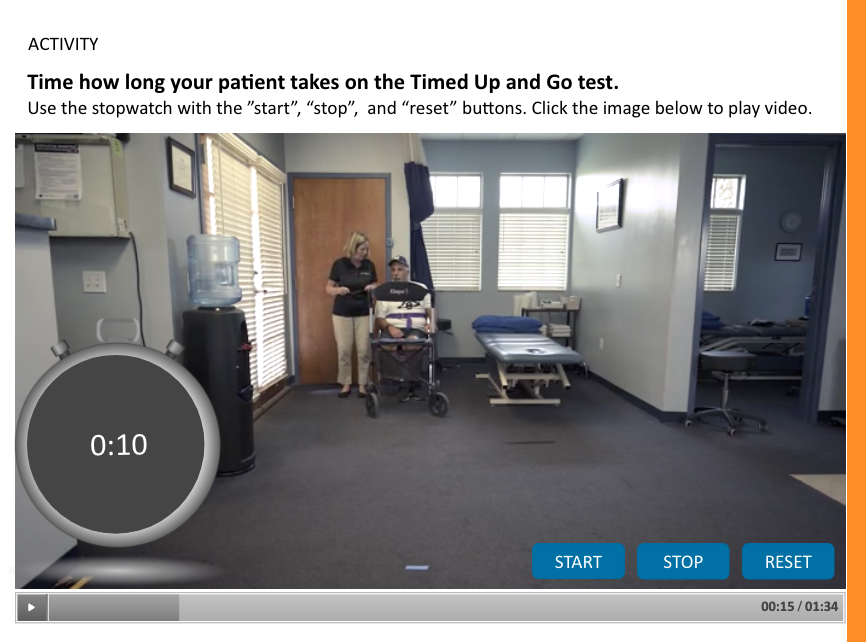The Problem
The one-way transfer of knowledge as traditionally provided by the Sage on the Stage …. did not necessarily improve during this Pandemic by the Well-intentioned professor on Zoom! (Speaking about myself and probably many others!)
This year many colleagues and I yearned for short interactive experiences that either allowed for application and interpretation of knowledge or knowledge checks that could be easily deployed, graded, and were carefully targeted to specific learning objectives.
The Answer
MiniSIMS: Short patient-based scenarios designed to help students apply and interpret learned knowledge in a simulated clinical environment. Typically 5-10 minutes long, and multiple-choice, matching-based items.
MicroLearning: Simple, short, and easily deployed. These mini-assessments help the students draw on the knowledge they have acquired and can be used as quizzes or exam preparation
An example of a MiniSIMS: Neuro MiniSIMS (on real patients)
Timed Up and Go (Click here to try a Neuor MiniSIM)
MOCHA
Spasticity assessment
Rigidity assessment
Coordination Testing (dysmetria/dysdiadokokinesia)
Modified Ashworth Scale
Romberg and Sharpened Romberg
Five times sit to stand
10-meter walk test
6-minute walk test
An example of a MicroLearning: Acute Care MicroLearning
Heart sounds
Standard and Universal Precautions
Lung sounds
EKG





